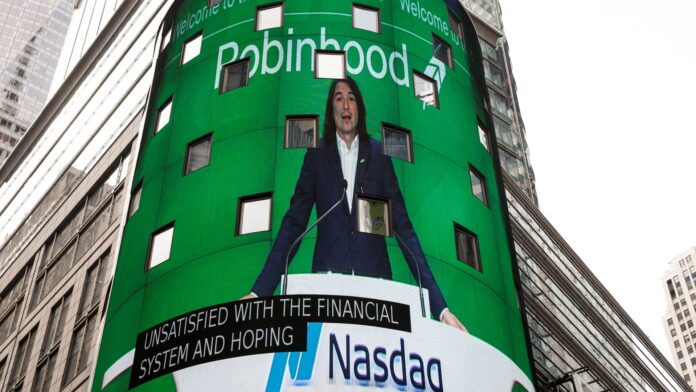The near-term outlook for Robinhood is looking grim as competition and regulatory risks mount, according to Barclays. The firm downgraded shares of the online trading platform to underweight from equal weight and reiterated its $10 price target in a Tuesday note. The target price is roughly 5.5% higher than where shares of Robinhood traded at Tuesday’s close. Robinhood has shed roughly 48% year to date. “Robinhood has had a challenging 2022 so far, as extremely rapid growth in 2021 and prior years was followed by a material slowdown in retail trading activity,” analyst Benjamin Budish wrote. “Looking forward, rising rates and cost cutting should make it easier for HOOD to achieve profitability in the near term, but we think Robinhood’s customer base (i.e., younger and lower income vs Schwab and Interactive, we believe) is likely to be impacted most severely by continuing inflation and a potential recession.” Cut costs, headcount The company’s cost cutting measures, while a sign of discipline, may also hinder its long-term growth by making it harder to attract the talent it needs to move forward with its current product pipeline. In earnings released in early August, Robinhood announced it would cut 23% of employees — after laying off 9% in April — and lowered its expectations for the full year. Robinhood should have an advantage over other brokers in introducing new products to customers given its tech platform, which would be supportive of a higher valuation if it led to more diverse revenue streams, according to Budish. “Nevertheless, we have seen mixed results with other fintech apps in terms of diversifying revenues away from core products,” he said. “While the product pipeline indicates the company is heading in this direction, we think it will be some time before this may come to fruition.” At the same time, Robinhood has a lot of competition from other brokers, fintech and crypto-native companies that will likely only get more intense going forward. Companies such as FTX, Cash App and even PayPal have similar offerings that may appeal to the same demographic as Robinhood. Regulatory risk There’s also the threat of regulatory risk, as Robinhood has found itself under fire many times since becoming a public company. Most recently, a judge ruled that the company must face market manipulation claims over restrictions it placed during meme-stock rally trading. “In addition to regulatory (and political) headline risk, we also think the potential elimination of payment for order flow is likely to remain an overhang for some time, given SEC Chair Gensler’s recent comments have not yet been presented as a formal proposal,” Budish wrote. “Further, while a change here would primarily impact the company’s equities trading business, it is not inconceivable that such a rule would at some point apply to options and even cryptocurrencies, if the SEC is successful in its pursuit to regulate various tokens as ‘securities.'” Overall, Barclays initiated coverage of the brokerage space with a positive view and buy-ratings on Apollo, Ares, Interactive Brokers, P10 and the Blackstone Group. It also has equal weight ratings on Charles Schwab, Coinbase and StepStone Group. — CNBC’s Michael Bloom contributed reporting.
© heardonwallstreet.com


